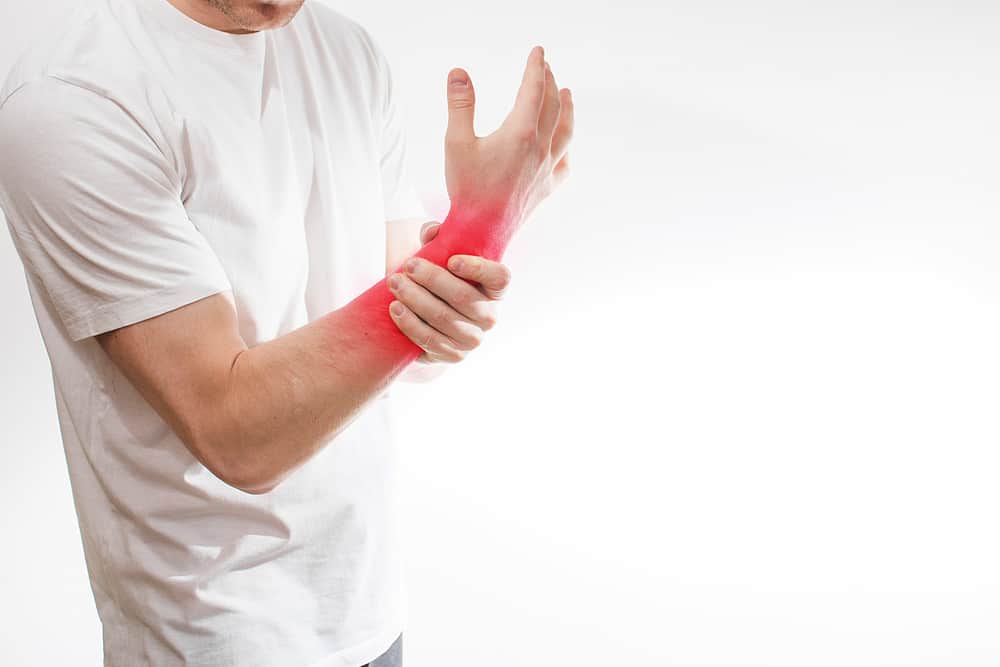Contents:
- Medical Video: 6 Home Remedies for Tendinitis That Actually Work (Tendonitis)
- What causes the forearm to hurt?
- 1. Injury
- 2. Excessive use of hands
- 3. Arthritis
- 4. Carpal tunnel syndrome
- 5. Poor posture
- 6. Neurological problems
- What can be done to overcome the forearm pain?
- Rest your hands
- Taking medication
- Immobilization
- Cold compress, then warm compress
- Stretch
- Surgery or injection
- Preventing forearm pain
Medical Video: 6 Home Remedies for Tendinitis That Actually Work (Tendonitis)
The forearm consists of two different bones and is joined at the wrist. Both bones are called radius and ulna. If you touch your lower arm, the radius of bone is the parallel bone connecting your thumb to the elbow. While the ulna bone is a bone that connects from your little finger to your elbow. Well, this injury around the radius and ulna bone can make you feel forearm pain. Then what can make the forearm hurt? And how to handle it at home? Check out the following review.
What causes the forearm to hurt?
There are many causes that can cause arm pain, especially the lower arm, from injury to certain medical conditions that cause damage to nerves, bones or joints. Here are some reasons:
1. Injury
Injuries that occur like falling, bumping hard, or pinched. Yes, these injuries can cause fractures in the forearm bones or damage the condition of the ligaments and tendons that are in the forearm. As a result, stabbing pain arisesannoying.
2. Excessive use of hands
Some sports such as tennis or lifting weights give very heavy emphasis on the muscles in the forearm. This condition can make the muscles tighten and eventually pain after exercise.
In addition, excessive computer use can also cause muscle stiffness in the forearm, which is known as a repetitive strain injury. This condition is often found in office employees who use computers every day.
3. Arthritis
Arthritis or arthritis can occur in the arms or elbows, causing pain in the forearm. The characteristics of you experiencing arthritis are pain that can arise even when you are not moving and use your forearm at all and appear red around the affected joint.
4. Carpal tunnel syndrome
The condition of carpal tunnel syndrome makes the nerves in the wrist that lead to the finger begin to narrow, due to this narrowing the nerve finally gets pressure, and over time it will cause pain.
5. Poor posture
Body postures such as bending can also affect your forearm. When your shoulder is curved forward, it can press on the nerves in the lower arm.
6. Neurological problems
It could also be that your forearm pain is a side effect of another medical condition that affects the forearm nerves, such as diabetes or thyroid disorders.
What can be done to overcome the forearm pain?
Rest your hands
Reducing activities that involve the forearm will help injured tendons, ligaments, muscles, bones or nerves to recover soon. People who are active in exercise should avoid or reduce the use of their forearm during the exercise until the pain subsides.
Taking medication
You can also use ibuprofen as a pain reliever or anti-inflammatory medication to treat the forearm pain. More clearly, consult with your doctor which drug is the most appropriate to overcome your problem.
Immobilization
In severe cases that make the lower arm very painful, a person may need to have strokes to limit movement and keep immobilized bones in motion for some time.
Cold compress, then warm compress
Cold compresses can help reduce inflammation and pain. After no more swelling or inflammation occurs, you can give warm compresses.
Stretch
Some doctors also recommend stretching to reduce the forearm. However, you should not start training or stretching without the approval of your doctor or physiotherapist. If not, this will only add to the condition of the already painful forearm.
There are several stretching movements that can usually be done namely:
1. Wrist extensor stretch
- Align the front of the painful hand with your palm down.
- Use the other hand to pull the palm of the hand hanging down into your body
- Hold this stretch for 20 seconds
- Repeat up to 5 times
2. Wrist turn
This movement requires objects that are a little heavy but you can grip with one hand, for example, a thermos drink, or a can of food.
- Hold the object you have prepared in one of your hands.
- Straighten your hands forward while grasping the object with the palm of the hand pointing up.
- Turn your grip until your palm is pointing down.
- Do 3 sets of repetitions. In 1 set consists of 10 repetitions of holding objects by positioning the palm up and rotating the object in the palm position down.
3. Elbow bend
- Stand straight with both hands on the side.
- Bend your right hand up to touch your shoulder. If you are unable to touch your hands to your shoulders, as much as possible point your hands towards your shoulders as little as possible even if you don't stick.
- Hold the position of touching the shoulder for 15-30 seconds.
- Then straighten your hands again.
- Repeat 10 times.
- Repeat the same movement on the side of the hand.
Surgery or injection
If the condition cannot be treated with simple treatment at home, the doctor will give another treatment surgically or give an injection to treat it. Therefore, if you experience a condition in your forearm that does not heal, you should consult your doctor.
Preventing forearm pain
- Avoid activities that give excessive tension to the forearm.
- Rest your hands regularly while working using work equipment such as computers, and use work tools that are more ergonomic.
- Strengthen your forearms and gripping strength through regular strength training.
- Keep your posture straight, not bent while working or walking.













